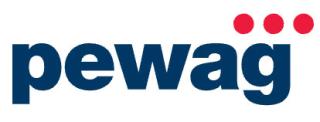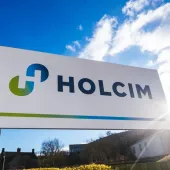Doosan DL420CVT-7 delivers big fuel saving
German wheel loader owner continues to benefit from 9 litres/h fuel saving in brick clay operation
About two years ago, August Lücking GmbH & Co. KG, a building materials producer based in north-west Germany, purchased a Doosan DL420CVT-5 wheel loader to feed materials for their brick production process. The purchase decision was based on trials that showed fuel savings of more than 9 litres/h, which were confirmed when the new machine began operation.
As a result, when the time came to purchase another new wheel loader, the decision was simple: the new machine should also be a Doosan DL420CVT, but this time the next-generation DL420CVT-7 model.
When the purchase of the original wheel loader was on the agenda, a Doosan DL420CVT-5 was tested at the company’s brickworks. The requirements for the loading of clay for the bricks are particularly challenging. The clay has a high density and therefore a high weight. In addition, the material is extremely sticky and tough.
In order to penetrate the material with the shovel, a high degree of even force and high traction are required, especially on wet surfaces. The tyres also play a major role here. Lücking rely on special tyres whose profile is more like that of a tractor than a wheel loader. The grooves of the tread on ‘standard tyres’ tend to clog up quickly due to the greasy consistency of the clay – difficult conditions that can also drive-up fuel consumption.
The previous machine, a competitor’s wheel loader with a conventional converter transmission, required, on average, around 23 litres/h of fuel under these conditions. When Lücking’s authorized signatory, Richard Lemke, asked Doosan wheel loader sales manager Marc Glesius about the consumption to be expected under these conditions, he cited 14 litres/h, a value that Mr Lemke found difficult to believe.
He therefore offered Mr Glesius the following bet: ‘If the DL420 with the CVT transmission only consumes 14 litres/h, ie around 10 litres less, I will buy it immediately.’ The rest, as they say, is history. The test consumption was the targeted 14 litres/h, and the wheel loader has now been in service at the company for two years.
Mr Lemke added: ‘In times of high fuel and energy prices, 10 litres/h naturally make an enormous difference. In the last two years, the consumption of the DL420CVT-5 has levelled off at the 14 litres/h already determined in the test operation. We also did not record any unscheduled machine failures during this period.
‘Therefore, only a Doosan wheel loader with a CVT transmission came into consideration when purchasing a new vehicle. We are confident that the new wheel loader can confirm these positive experiences.’
One of the main factors behind the low fuel consumption is the variable transmission, as Marc Glesius explained: ‘This transmission combines the advantages of a mechanical and hydrostatic transmission and excludes the disadvantages of both systems. The variable transmission switches continuously from the hydrostatic drive to the mechanical drive as the speed increases and depending on the application-related requirements.
‘The advantages that this system offers include the excellent traction that a hydrostatic transmission offers and driving over longer distances with a direct mechanical transmission. It owes the fuel savings to the lower engine speed compared with conventional transmissions, which is necessary to achieve maximum speed and traction.’










